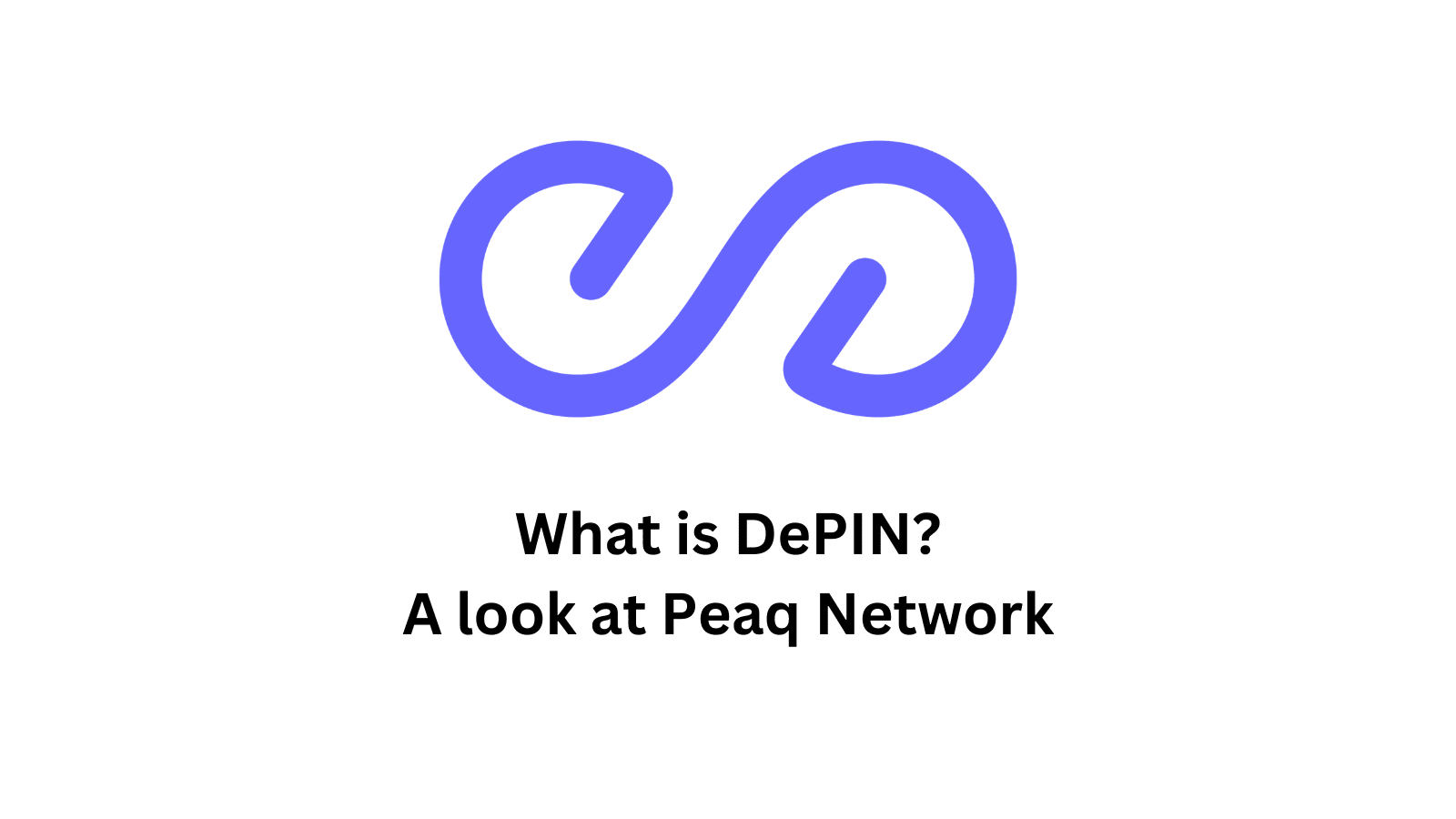It’s been called EdgeFi, Proof of Physical Work (PoPw), Token Incentivized Physical Networks (TIPIN) and more. In its current form, it’s popular as DePIN, and has been pegged to be a standout sector in 2024 and beyond. Here’s an introduction into what are Decentralized Physical Infrastructure Networks. It’s basics, but should help in giving you an idea. I’ve also listed within reasons why I think the yet to be launched (token wise) Peaq Network may well be a show-stealer in this sector.
So, what is DePIN?
Here’s what ChatGPT threw up when I asked it to explain the concept,
Think of DePIN like a big, neighbourhood Lego set. Everyone in the neighbourhood has some Lego bricks (which are like pieces of important community stuff, such as solar panels, Wi-Fi routers, or electric scooters). Each person decides to build something with their bricks that everyone can use.
For example, one person might use their bricks to build a phone charging station. Another person might build a bench with a solar panel that powers a light. When people in the neighbourhood use the charging station or sit on the bench, the person who built it gets a special “thank you” note in the form of digital tokens.

The more people use what you’ve built, the more “thank you” tokens you get. Over time, the neighbourhood becomes a cool place full of useful things that everyone has built together. And since everyone is being nice and sharing, the whole neighbourhood works better and everyone is happy.
Making sense? 🤔
Borrowing from a definition I came across on the topic, DePIN is
- a decentralized application
- that uses tokens to incentivize people
- to crowdsource and build connected real-world physical infrastructure.
It might sound lofty and ambitious at this stage, but there’s work happening here. It’s a step up as I see it from the existing Real World Assets space. DePIN will find utility across areas including transportation, energy, telecom and more – sectors seen as pillars of all economies. DePIN lets people participate by contributing resources like hardware, and in return, earning tokens.
Imagine a sharing economy. A decentralized Uber or Airbnb, a democratic version of OpenAI and ChatGPT, powered and owned by its contributors.
There’s already some cool projects in this space listed: Helium, IoTeX and more.
I’ll talk about this in other posts, but here’s a peak in PEAQ Network and why I think this is one project which will stand out in the DePIN space
What is PEAQ Network?
In their own words, is a multi-chain Layer 1 blockchain for real world applications. It lets users build DePINs for sectors including transportation, connectivity, energy and more.
Some highlights,
- The network can currently scale beyond 10,000 transactions per second (TPS) while maintaining a minimal transaction cost of ~$0.00025.
- It aims to scale past 100,000 transactions per second in 2024 by leveraging Elastic Scaling.
- peaq uses the most environmentally friendly blockchain architecture available.
- peaq has a Nakamoto Coefficient of 93 (I’ll leave you to google this :)). The highest among major Layer-0 and Layer-1 blockchains.
- peaq supports EVM & ink! (Rust) Smart Contracts and Pallets, providing builders with flexibility and convenience.
- peaq’s multi-chain functionality enables seamless interaction with Polkadot, cross-chain machine identities with Cosmos, and bridges to Ethereum.
I’ll post some pictures here, so it’s less of words,
Partners / projects they are working with,

Ecosystem
There are currently 68 projects being built on peaq. That’s a lot for a project which is yet to be well recognised.

Here’s more on that: https://www.peaq.network/ecosystem-page
Use cases
As always, DYOR. I’d encourage you to dig into this page: https://www.peaq.network/use-cases. It can help you decide how much of what they are doing is feasible and or is just froth.
The way I see it, this project has massive use cases in the coming years.
Team
I had a chance to interact with a team member (co-founder earlier last year). What stands out with these guys in any of their communication is they are not trying to ride a wave, or follow the latest trend. Listen to their videos or read their blog – they are building stuff with a longer-term perspective. 3 years, 5 years, 10 years, is something you’ll hear a lot or read a lot of in their communication. A massive stand out personally.
Here’s a look at the team and advisory board. Personally, this is a massive plus point to this project. These guys seem to know what they are doing and building.
The token (PEAQ and KREST)
- $PEAQ is token of the peaq mainnet. It is not yet launched, and expected to be launched in Q1 this year
- PEAQ will be used to pay transaction fees, deploy smart contracts, and use Web3 bridges. It will be used for liquidity mining, liquidity provision, and rewarding the community. There’s a lot more here.
- PEAQ’s total supply is set at 4,200,000,000.
- Along side PEAQ is the KREST (Krest Network) token. This is the equivalent of Kusama to Polkadot. A canary network
- While you wait for PEAQ token to launch, you can hold KREST (available on MEXC) to be eligible for an airdrop of PEAQ. Here’s more on that.
In conclusion
I have a feeling I’d cover more of this project in the coming months. This was meant to be an introduction. The way I see it, DePIN is a space which has begun to gather attention. Here’s a project which ticks all the boxes when it comes to fundamentals, use case, team, partners, ecosystem, with the potential to take a leadership position in the space. Worth a check. DYOR.


